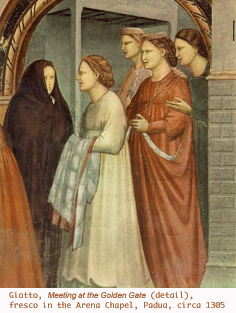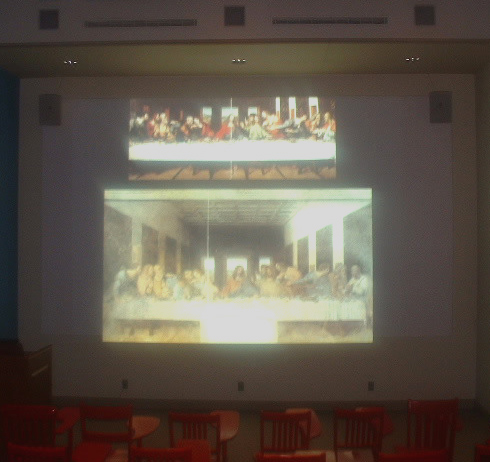ART 236
Taught by: Jacqueline Marie Musacchio
The Course
 ART 236, Sixteenth-Century Painting, Sculpture, and Decorative Arts in Italy, is an intermediate level survey of sixteenth-century Italian art. This course has been taught at Vassar for many years and always taught with traditional slides.
ART 236, Sixteenth-Century Painting, Sculpture, and Decorative Arts in Italy, is an intermediate level survey of sixteenth-century Italian art. This course has been taught at Vassar for many years and always taught with traditional slides.
The Technology
When I came to Vassar in the Fall of 2000, I began to teach ART 236 (as well as my other classes) with an interactive website for syllabi, tests, and and study images, and I used the Internet, videos, and DVDs in the classroom whenever possible. In Spring 2004, I replaced slides with digital images.
I used Microsoft Powerpoint to create presentations for use in class. To make this possible, the Visual Resources Library staff digitized more than 1000 slides that were then adapted with PhotoShop for presentation use. The academic consultants from ACS created some of the first drafts of my presentations according to my instructions. I quickly learned how to use PowerPoint to refine those presentations, compile others, and coordinate my lectures each week.
One advantage of using digital presentations was that it gave me greater flexibility in the classroom overall, and allowed me to plan lectures using the widest possible range of sources. They also allowed me to spend more time thinking through material whenever and wherever I wanted to do so, rather than scrambling for new slides or lost slides in the Visual Resources Library. Powerpoint allows me to arrange slides in ways that were not possible with a pair of side-by-side slide projectors. This greater freedom and flexibility was the most positive aspect of the experiment.
The Student Response
Students have always responded positively to my use of digital resources in teaching. I know they appreciated the websites and study images I used in the past, and they seemed intrigued by the digital images I now used in lectures. I encouraged them to comment on it in their course evaluations and they were overwhelmingly positive, although they did note that sometimes the quality of the image was not as good as they remembered from slide presentations or the book.
The Challenges
As with any major shift in course preparation, the first time was the most difficult. I needed slides to be scanned quickly and well, and that was not always possible. The quality of some scans was quite low, and I had to modify them or find alternative images myself to make up for these. We have much more success when we purchase scans from commercial vendors, or take them ourselves; the images scanned from slides are almost always of inferior quality. The kind of projector used in the classroom is also vital, as not all are able to do what I needed them to do. Upgrades to our current equipment will make an enormous difference to the future success of this venture.
New Directions
I hope to continue using digital images for classroom lectures in all of my classes; I will try to do this again for ART 235, Renaissance Painting, Sculpture, and Decorative Arts in Italy, when I return from leave in Fall 2005. As we learn more about this process and invest more money in the technology, the images and projectors will improve. In art history, the quality of the image is paramount, so finding a way to ensure this quality is an important key to my continuing use of digital images in classroom lectures.

